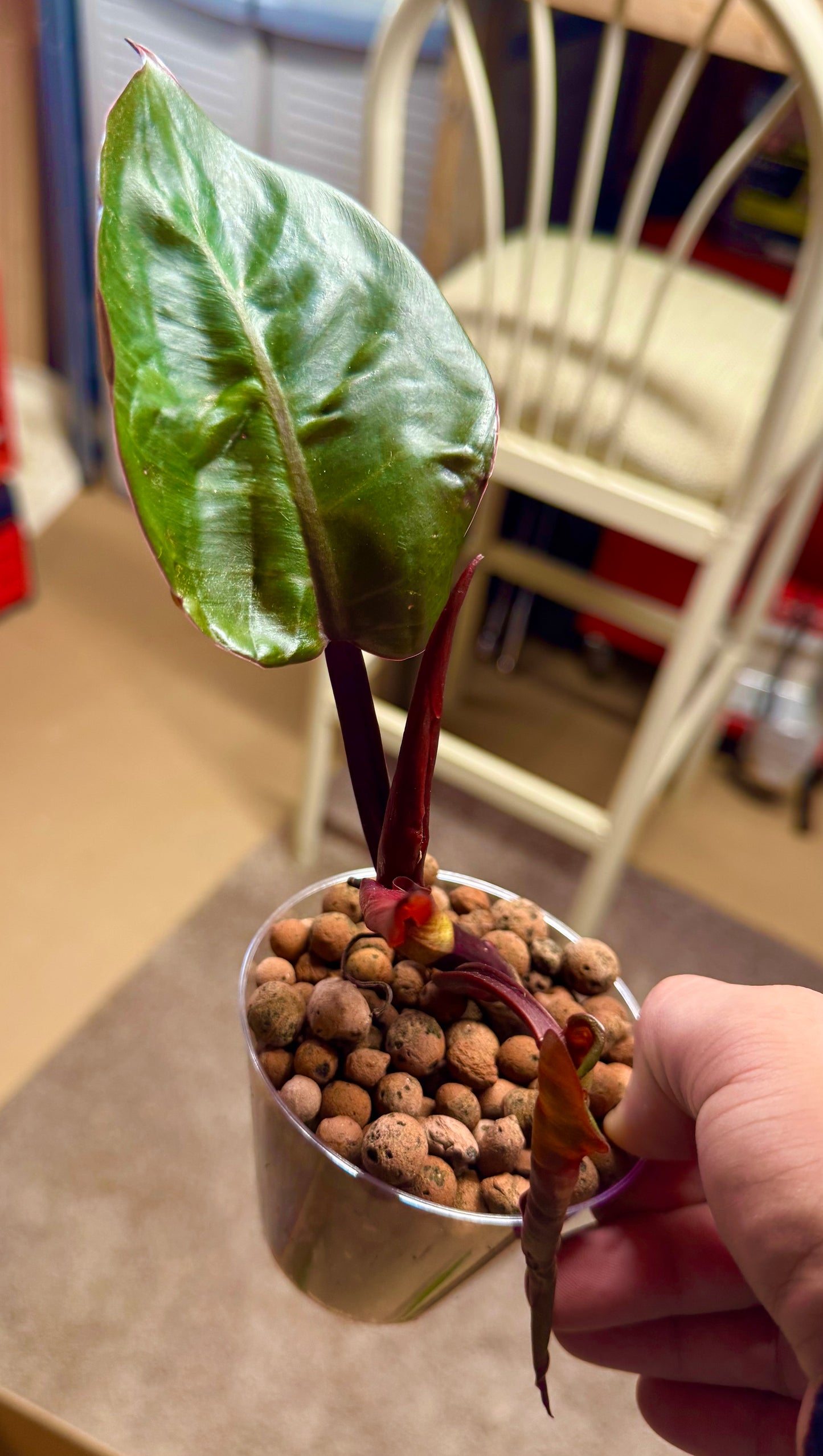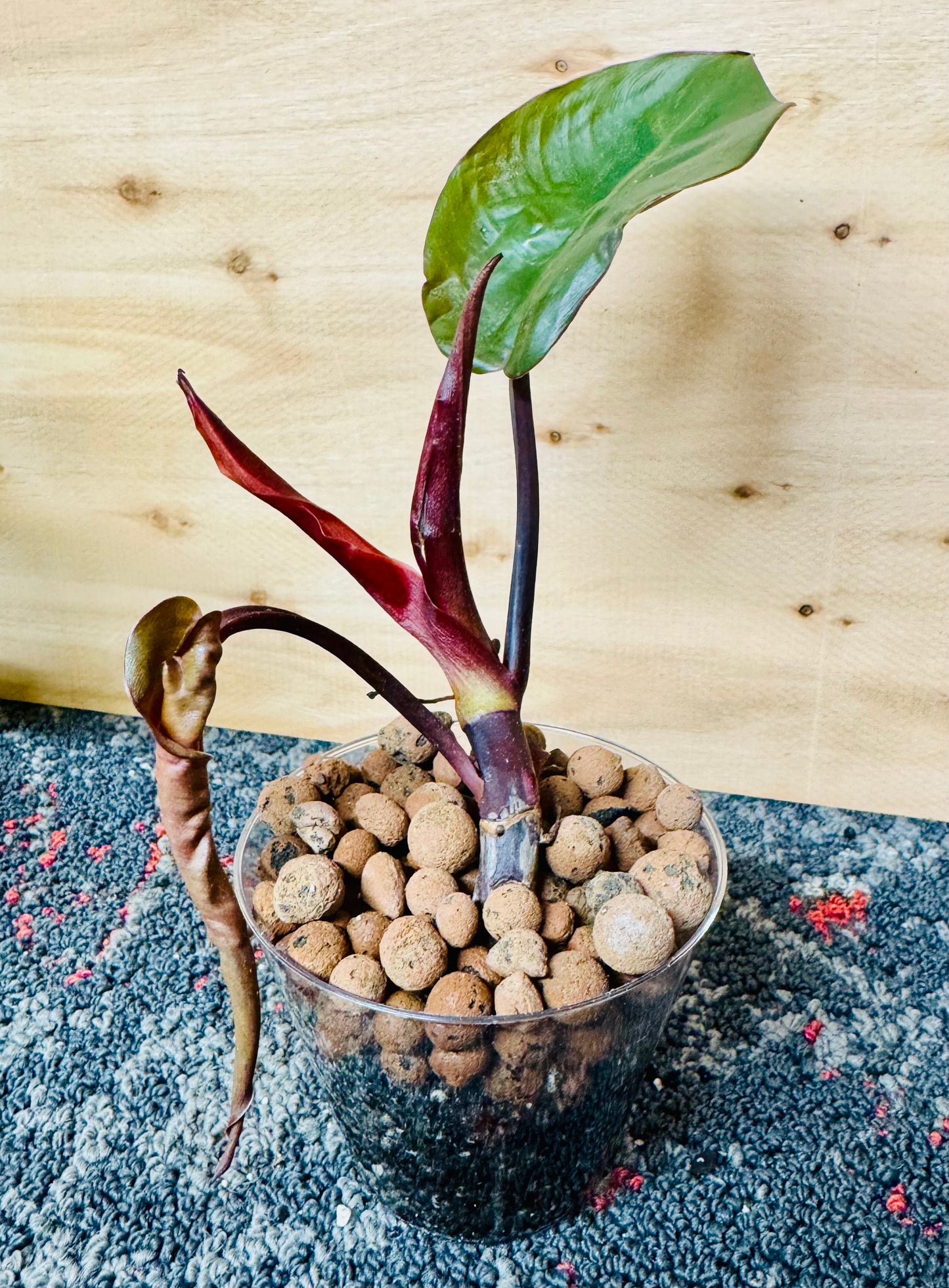Eden on Earth
6” Philodendron Congo Rojo - Rooted Starter
6” Philodendron Congo Rojo - Rooted Starter
Couldn't load pickup availability
Home Grown!
6 inch Philodendron Congo Rojo Rooted
The Ultimate Guide to Philodendron 'Congo Rojo' Care
The Philodendron 'Congo Rojo' is a stunning and popular houseplant, not for its vining habit, but for its impressive, self-heading form. It produces large, glossy, dark green leaves with deep red to burgundy undersides and stems. New leaves emerge in a spectacular shade of coppery red, making it a true showpiece.
1. Understanding Your Plant
-
Scientific Name: Philodendron 'Congo Rojo' (a hybrid of Philodendron tatei)
-
Origin: This is a cultivated hybrid, but its parent species are native to the tropical regions of South America.
-
Growth Habit: This is a "self-heading" or "self-supporting" philodendron. Unlike many of its relatives, it does not vine or climb. Instead, it grows outwards from a central base, creating a full, bushy, vase-like shape. This makes it an excellent floor plant.
2. Core Care Requirements
💡 Light
-
Ideal: Medium to bright, indirect light. It can handle slightly lower light levels than many other philodendrons, but its deep red coloring will be most vibrant in brighter conditions.
-
Too Much: Direct sun will scorch its large leaves, causing discoloration and burn spots. An east-facing window is great; keep it protected from the harsh afternoon sun of a west or south window.
💧 Watering
-
When to Water: Water when the top 1-2 inches of soil have dried out. Use your finger to check the soil's moisture level.
-
How to Water: Water thoroughly until it drains from the bottom of the pot. Let it drain completely and then discard any excess water in the saucer. Do not let the plant sit in standing water.
-
Frequency: Water more often during the growing season (spring/summer) and less in the dormant season (fall/winter).
🌱 Soil
-
Perfect Mix: A rich, organic, and well-draining soil is key. A peat-based potting mix amended with perlite and/or orchid bark is an excellent choice.
-
DIY Option:
-
2 parts peat moss or coco coir
-
1 part perlite
-
1 part orchid bark
-
🌡️ Temperature & Humidity
-
Temperature: It thrives in typical household temperatures, from 65-85°F (18-29°C). It is not frost-tolerant and should be protected from drafts.
-
Humidity: It appreciates higher humidity but is quite adaptable to average household levels. To make it extra happy, you can mist it occasionally, place it near a humidifier, or group it with other plants.
3. Growth and Maintenance
🌿 Fertilizing
-
What to Use: A balanced liquid fertilizer formulated for houseplants.
-
How Often: Feed it every 4-6 weeks during the spring and summer. Dilute the fertilizer to half the recommended strength to avoid burning the roots. Do not fertilize in fall or winter.
✂️ Pruning
-
Minimal Pruning Needed: The primary reason for pruning a 'Congo Rojo' is to remove any old, yellowing, or damaged leaves.
-
How to Do It: Use clean, sharp shears or a knife to cut the leaf stem as close to the main stalk as possible. This helps maintain a tidy appearance.
🧼 Cleaning
-
The large leaves can collect dust. Gently wipe them down every month or so with a soft, damp cloth. This not only keeps the plant looking its best but also helps it photosynthesize efficiently.
🪴 Repotting
-
Frequency: Repot every 1-2 years, or when it becomes root-bound.
-
Choosing a Pot: Move it to a pot that is 2 inches wider and deeper to accommodate its growing root system. A 6-inch rooted plant will likely be ready for an 8-inch pot in about a year.
4. Troubleshooting Common Issues
-
Yellowing Lower Leaves: The most common cause is overwatering.
-
Leggy Growth: The plant is likely not receiving enough light and is stretching to find more.
-
Brown Leaf Tips: This can be a sign of low humidity or inconsistent watering.
-
Pests: Generally resistant, but can be susceptible to mealybugs and spider mites. Check in the crevices where new leaves emerge.
⚠️ A Note on Toxicity
-
Like all philodendrons, the 'Cogo Rojo' is toxic to pets and humans if ingested. Keep it out of reach.




